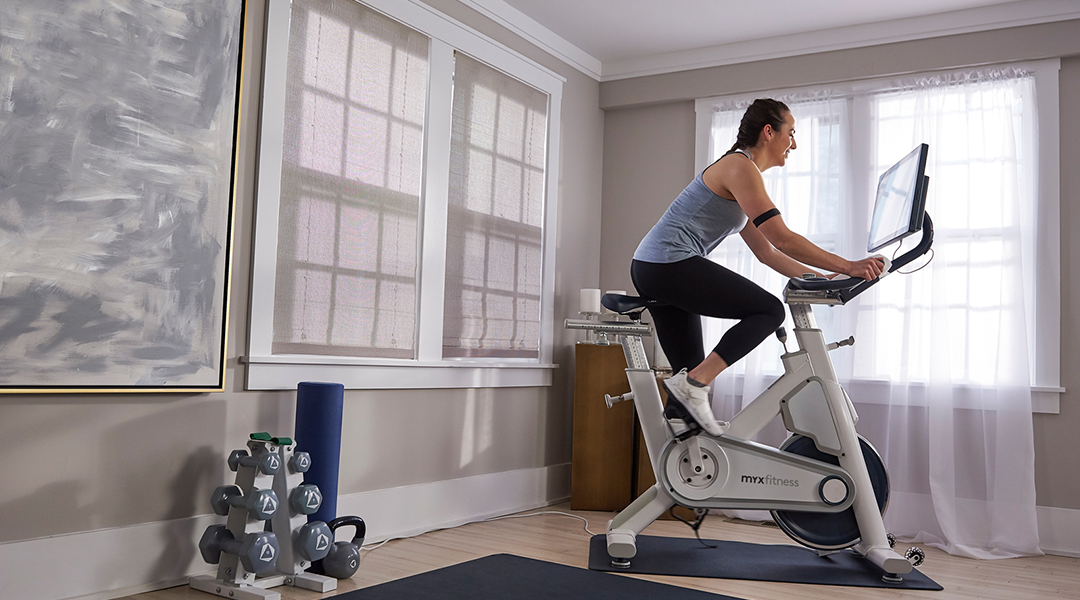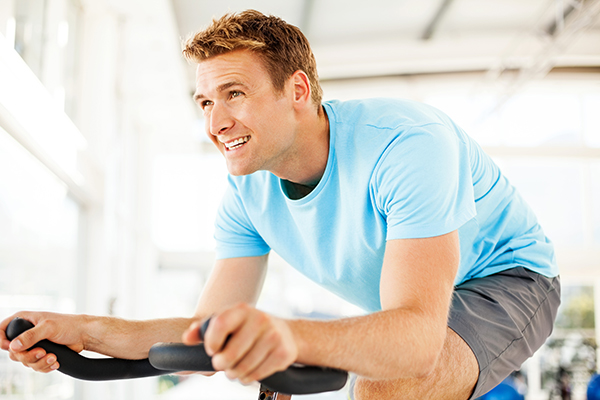Maybe you got the basics of balancing, steering, and braking down decades ago. But there are nuances to proper cycling form that you probably never learned when you were swerving down the sidewalk on your banana seat.
If you’re spending hours in the saddle each week in pursuit of greater fitness, you need to get serious about your cycling form. Here’s why your form is important, as well as how to fix it.
Why Is Proper Cycling Form Important?
In the course of a 50-minute ride, you might rotate the pedals 4,000 times. That’s 4,000 reps of a single exercise.
Do it correctly, and cycling will build stamina, strength, and power. But if your form is off — even slightly — that 50-minute ride offers 4,000 opportunities to sustain an overuse injury.
“Cycling with incorrect form can often lead to discomfort such as lower back pain if you are too far from the handlebars,” says BODi trainer Justin Flexen.
Other positioning mistakes include placing your seat too close to your handlebars, which can lead to knee pain; or placing your seat too low, which can lead to hip pain.
But injury prevention isn’t the only reason to focus on proper cycling form and setup. “Good form ensures that you have a comfortable and efficient ride,” Flexen adds. That translates into more speed, strength, and fitness — not to mention way more fun.
4 Tips for Proper Cycling Form
Here’s how to make sure your form stays on-point throughout your ride.
1. Set the appropriate seat height
Your legs are strongest close to the locked-out position, so adjust your saddle (seat) height to take advantage of that.
“Riders often position their saddle too low,” Flexen says. That can lead to knee, hip, and lower back pain — not to mention slower, less efficient pedaling. “More often than not, a higher seat is a much more comfortable — and stronger — position,” Flexen adds.
Flexen recommends raising your saddle to hip height when you’re standing next to your bike. Make any necessary adjustments from there.
2. Keep your hips level
When you’re riding, your weight should rest evenly on your two sitting bones, with minimal shifting left or right. If you feel sideways movement in your hips with each stroke — particularly if it’s uneven — you’ll likely develop lower back pain over time.
The fix: Stretch your hips carefully before each ride, pulling each knee to your chest to release the tension that pulls your hips off-kilter.
Still bobbling left and right? Try the next step…
3. Pay attention to your hands
Sure, cycling is a lower-body sport. But your hand positioning determines the angle of your torso — which, in turn, determines how much power your hips can generate.
Position the seat so you can reach the handlebars without pain in your lower back, and without shrugging your shoulders. “You should be able to rest your hands comfortably at the base of the handlebars,” Flexen says. “You should be able to lift your chest and drop your shoulders down and away from your ears with ease.”
4. Keep back when you stand
Standing in the saddle, and getting your full weight into each pedal stroke, gives you a critical power boost when you’re accelerating, grinding through a steep climb, or pushing over a short rise.
But you need to keep your hips in the right spot, says Flexen. “Many riders shift their weight forward, away from the saddle,” Flexen says. That puts unnecessary strain on the knees.
Instead, he says, “Keep your hips back so that you maintain contact with the saddle.” That allows your knees to remain behind your toes, preventing pain and irritation in your joints.






